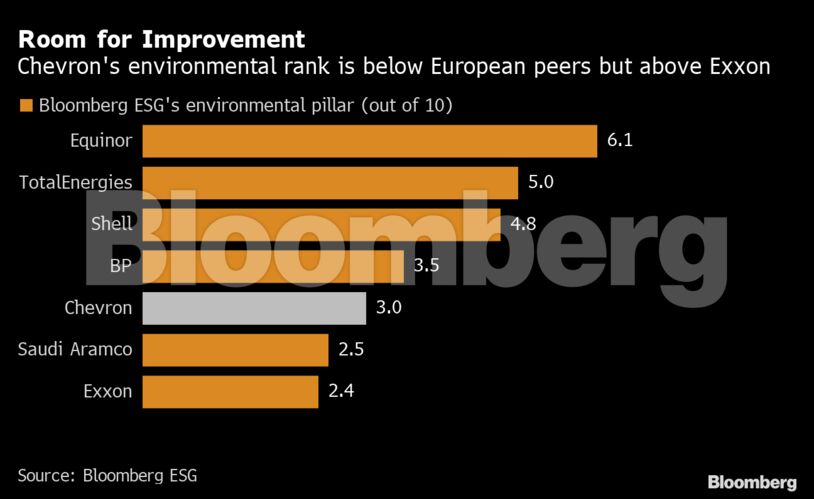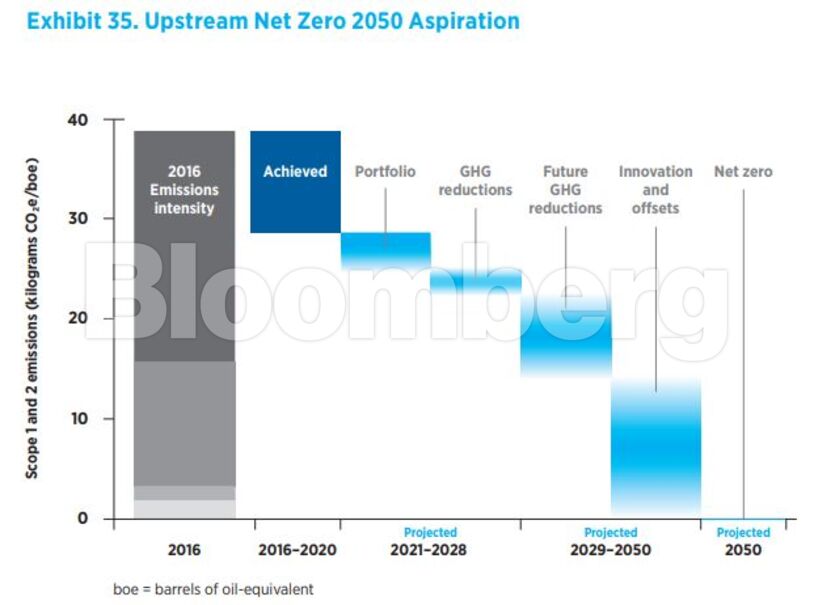Chevron also set a target of reducing carbon intensity by 5% from 2016 levels by 2028 for the full lifecycle of its products, the San Ramon, California-based company said Monday in a report. The target includes Scope 3 emissions, or those of its customers. Shareholders defied Chevron’s board in May and voted to reduce Scope 3 emissions.
While the pledge falls short of those made by European peers such as Royal Dutch Shell Plc and BP Plc, it’s the first time Chevron has outlined a multi-decade strategic commitment to reduce emissions. The goals focus on carbon intensity, a relative measure to the amount of energy produced rather than absolute levels of pollution, which means the company can still grow overall production but must do so more cleanly.
Chief Executive Officer Mike Wirth last month emphasized what he sees as the importance of having an achievable carbon strategy that balances the world’s need for reliable energy with the lowering of emissions. The current global shortage of natural gas, along with the run-up in oil and coal prices over the past few weeks, emphasizes how dependent upon fossil fuels the world still is.
Earlier Monday, Qatar, the world’s biggest exporter of liquefied natural gas, said it would be wrong to commit to eliminating planet-warming emissions without having a proper plan in place.
Wirth has bound Chevron’s climate efforts with a strategy of improving financial returns, arguing that one without the other won’t work for shareholders and the environment. The company is committed to oil and gas for the long-term but is also making dozens of small-scale bets on new technologies like renewable natural gas that it believes can scale up in the future.
The approach contrasts with that of its European peers, which are planning to pivot toward more renewable energies over time.
Share This:




 CDN NEWS |
CDN NEWS |  US NEWS
US NEWS 





























